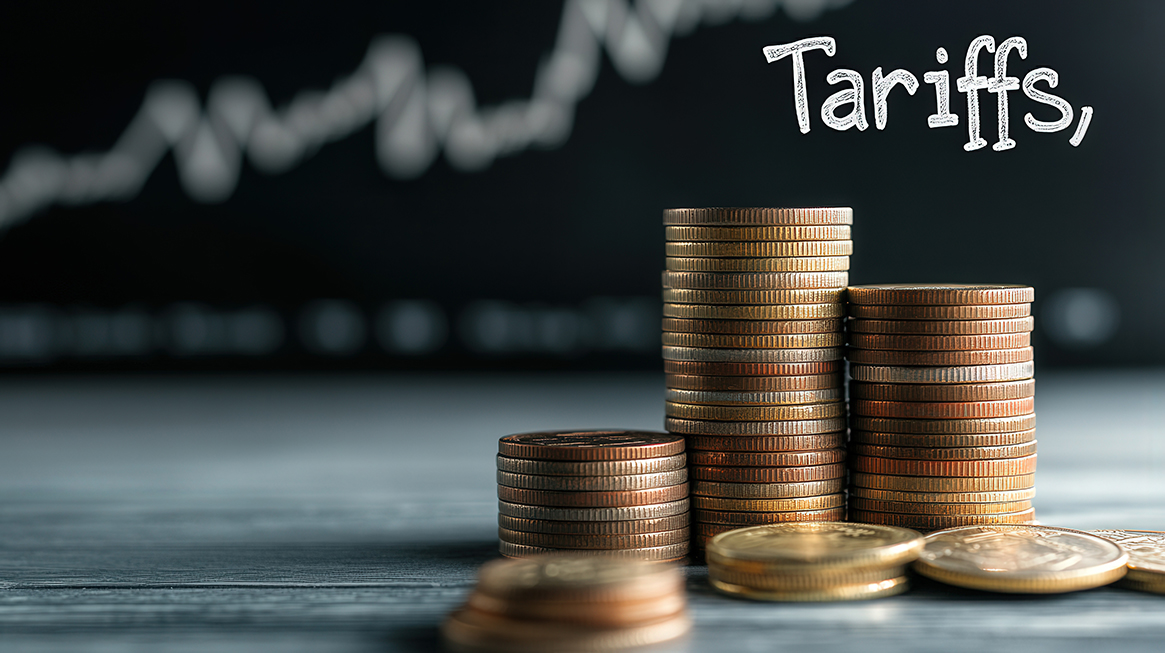Why Is Gold in Focus Right Now?Throughout early 2025, gold has surged to record highs, breaching $3,400 an ounce for the first time in history. For newer traders, this may seem like a “blue-sky” breakout without precedent. For experienced market participants, it raises a more practical and important question, i.e. what is driving this rally, and is it sustainable?Understanding the fundamental and technical context behind such moves helps us not only trade the present but plan for what may come next, which can guide us in the decisions we make with our trading action.This article aims to build upon recent outlook webinars that we have delivered recently, which have waved the bullish flag throughout. However, I must admit to having been surprised at the velocity of the rally.We will try to unpick key drivers as well as analyse what could be next and why.What’s Driving the Gold Rally in 2025?Let’s take a look at the main contributing factors that are currently supporting the upward momentum in gold prices:1. Rising Global Uncertainty and Geopolitical RiskPolitical instability, as it has historically, remains a strong macro backdrop for gold. Recent flare-ups in geopolitical conflict — particularly in Eastern Europe and the Middle East — have returned “safe haven” flows back into focus. This is typical during periods when traditional risk assets like equities face greater downside volatility.Additionally, the somewhat turbulent start (even more so than many predicted) to the new U.S. administration has introduced an element of policy uncertainty, particularly around trade, inflation and the impact of economic growth. The possibility of further tariffs or fiscal tightening reinforces gold’s appeal as a form of protection.Key Point: Traders need to monitor not just existing conflicts, but also the market perception of risk. Gold often responds not to what is happening, but to what investors fear might happen.2. US V China – trade war brewing?Tariff dramas have been the major market chatter and sentiment changer over the last few weeks. On top of general broad international tariffs, and to pause or not to pause decisions, the major attention is, and likely to continue to be, the escalation of tariffs between the U.S. and China has pushed inflation expectations higher. While inflation has generally cooled since its 2022–2023 peaks, cost-push factors such as tariffs can reintroduce price pressures, particularly on imports.Central banks globally are including tariffs within a rate decision narrative, but no central bank is more in focus, of course, than the Federal Reserve. In Trump's last presidency, the current Fed chairman Jerome Powell came under fire for rate policy, and already, it was noteworthy that the current president aimed a shot at him once again. The market is aware that inflationary shocks are not off the table once tariff impact starts to bite at importer costs in the US, and the “priced in” rate cut that is likely to occur in June is still some time away, and the certainty that this may happen may start to waver. Gold has historically performed well when real yields (interest rates adjusted for inflation) fall or remain negative.Key Point: Watch CPI data closely. If inflation expectations start to climb again due to trade-related costs, gold may continue to benefit.3. U.S. Dollar WeaknessThe U.S. dollar index (DXY) has declined to multi-year lows, making gold more attractive to non-U.S. investors. This is a classic inverse relationship — as the dollar falls, gold often rises.A weaker dollar could potentially indicating that the market could be pricing in a more dovish Federal Reserve, with rate cuts potentially on the table later in the year, However, more likely in this case, the dramatic drop in the USD, which this week hit 3 year lows, is more likely due to concerns about growth and even the perceived chance of recession.At the time of writing, the earnings season is ramping up, and despite Q1 results so far being relatively positive, we are already seeing concerns expressed (as is often the case with uncertainty) relating to forward guidance. This, of course, plays into the slowdown narrative. This week's PMI data feels as though it may have even more importance than usual.Key Point: Gold traders should always include USD direction in their macro framework. It often amplifies or suppresses broader trends in the metal.4. Central Bank and Institutional DemandAnother major support for gold is the persistent demand from central banks, particularly in emerging markets such as China and Turkey. These institutions are increasingly shifting reserves into gold as part of long-term diversification away from USD assets.Evidence suggests ETF flows have also picked up, showing increasing but not outrageous levels, suggesting the move is still institutional in nature rather than purely speculative.Key Point: As long as institutional and central bank demand remains steady or rising, gold has a structural reason to be supported underneath current price levels.What the Technical Picture Is Telling UsWhile fundamental drivers continue to support gold, the technical setup also tells an important story — one that can help traders decide whether to stay in, take partial profits, or prepare for tactical re-entries after any price pullback. Let’s explore the technical picture in a bit more detail.
- Gold’s Long-Term Trend Structure Remains Intact
Gold has been making a consistent series of higher highs and higher lows since mid-2023. This trend has been confirmed across multiple timeframes, including the daily and weekly charts — an important feature for position traders.Currently, price is well above both the 50-day and 200-day exponential moving averages (EMA), which have now turned upward and widened — a classic sign of trend strength and directional bias. When prices pull back in strong trends, these EMAs often serve as dynamic support levels.
- Momentum: The weekly RSI is elevated (above 75), which suggests gold may be in overbought territory in the short term.
What About RSI Being Overbought?One of the most common misunderstandings among newer traders is how to interpret an elevated RSI (Relative Strength Index), particularly when it crosses above the traditional 70 level.RSI above 70 does not automatically mean 'sell' — especially in strong trends, so this merits a little further discussion.Here’s why a high RSI may not be a problem:
- Context matters: In trending markets, RSI can remain elevated (above 70 or even 80) for extended periods without any meaningful pullback. This is often referred to as a 'momentum breakout' condition.
- Confirmation from volume: If rising RSI is accompanied by increased volume, it suggests that momentum is being supported by participation, not exhaustion. Currently, weekly volume has expanded on breakout weeks, supporting the move.
- New highs with RSI > 70 are actually bullish: A strong market making new highs and registering overbought readings usually reflects strength, not vulnerability — unless divergence begins to appear.
Key Point: Use RSI as a momentum gauge, not a reversal trigger in isolation. In this case, RSI supports the idea that gold is strong, not yet stretched to the point of reversal.
- Next Targets: Many technical analysts are watching $3,500 and $3,650 as key psychological and Fibonacci extension levels. A sustained break above $3,400 would likely bring these into view.
- Support Levels: If price retraces, $3,200 and $3,050 are likely areas where buyers may step back in, especially if the macro story remains intact.Key Point: Momentum remains strong, but even in trending markets, corrections are normal. Having a plan for where to re-engage is just as important as knowing when to stay out.
- What Would a Healthy Pullback Look Like?
Even the strongest trends pause. If gold does retrace in the short term, the nature of the pullback is more important than whether it happens.Signs of a healthy pullback include:- Controlled decline in decreasing volume- Price respecting prior breakout zones — e.g., $3,250–$3,280- Holding dynamic support like the 20-day or 50-day EMA- Reversal candle patterns near support (e.g., hammer, bullish engulfing)Key Point: In strong markets, pullbacks are often shallow and short-lived. They can be opportunities to scale in, provided the structure remains intact.Sentiment and Positioning: Are Traders Too Bullish?It’s important not to get swept up in price action alone. The COT (Commitments of Traders) report can provide valuable insight into whether markets are approaching overly crowded levels.
- Large Speculators have increased their net long positions, but not yet at levels seen in major historical peaks.
- Retail traders have only recently started to increase exposure, which suggests the move is not fully mature.
- ETF inflows, while rising, are still below the aggressive flows seen in 2020.Key Point: Current positioning suggests there may still be room to run, especially if new catalysts emerge. However, if positioning becomes too lopsided, be ready for faster and sharper corrections.
What Could Change the Narrative….Risks to Watch?Even with a strong bull case, traders must stay aware of what could derail gold’s momentum:Risk Event #1: Sudden USD reboundImpact on Gold: Could trigger a sharp pullbackRisk Event #2: Hawkish Fed surpriseImpact on Gold: Logically higher real yields = bearish gold due to USD impact – however, gold’s role as an inflation risk is likely to offset this.Risk Event #3: De-escalation of trade/geopolitical tensionsImpact on Gold: Safe-haven demand may soften if this is part of the reason for the current price rise. However, with other factors predominating price moves for right now, again, this may not be critical.Risk Event #4: Profit-taking and reversal in momentumImpact on Gold: Could create a short-term topKey Point: Risk doesn’t always mean reversal — but it does mean adjusting trade size, stops, and expectations when conditions change.Summary: Stay Informed, Stay DisciplinedGold’s rise in 2025 has been impressive, but it hasn’t been irrational. The macro backdrop, institutional support, and technical structure all support the trend.However, markets rarely move in straight lines, and traders should stay ready for both continuation and correction scenarios.Success is likely to lie in applying consistency in the management of profit and capital risks, as well as having a clear method to re-enter as appropriate. consistently while remaining adaptable to changing conditions.Traders should view the current gold move as a reflection of persistent macro themes and technical support rather than any sort of “bubble”. Whether you’re already long or waiting for a retracement, your decision-making should be rooted in having a clear and unambiguous trading plan and, of course, the discipline of follow-through in the actions you take.









.jpg)
.jpg)


